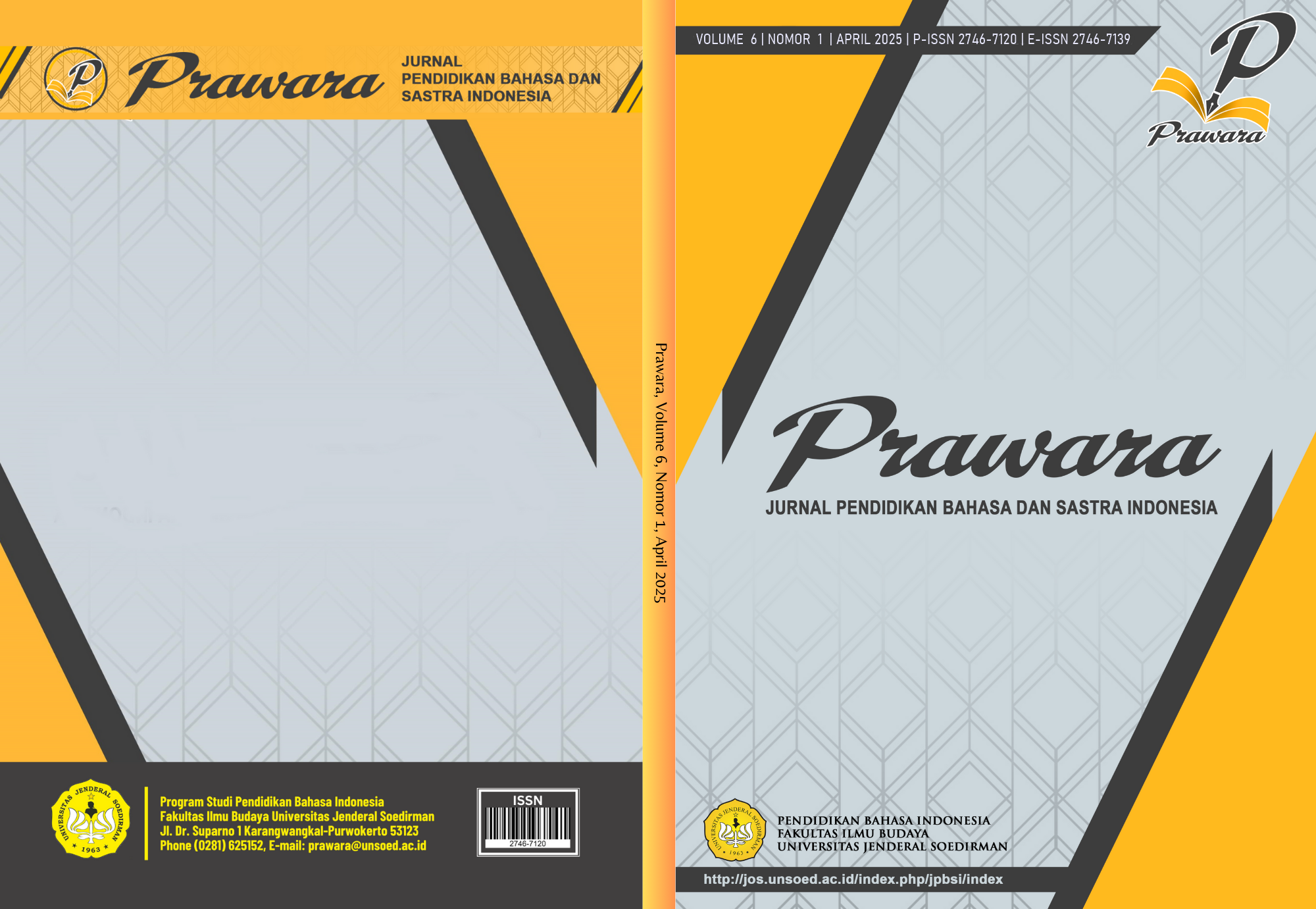Application of Snowball Throwing Learning Method Description Text of Class VII-7 SMPN 1 Dawarblandong
Abstract
This classroom action research aims to improve vocabulary acquisition of class VII-7 students of SMPN 1 Dawarblandong by using the snowball throwing learning method for descriptive text material. Classroom action research is used to identify difficulties faced in learning and solve real problems faced by educators in order to develop the quality of learning and learning achievement of students. The snowball throwing method means throwing snowballs to your own friends to be answered. The results of the implementation of the snowball throwing learning method to improve vocabulary acquisition in descriptive text material include several assessments consisting of vocabulary acquisition and formative assessments in the snowball throwing learning method. Cycle I assessment of student vocabulary acquisition averaged 78, so it can be said that the average still reaches the KKM value. However, cycle II changed the average to 82. The second assessment of the results of the assessment of self-ability or formative assessment in cycle I reached an average of 86. Meanwhile, cycle II increased with an average of 91. The value of the completion results accumulated with the vocabulary acquisition value and formative assessment using the snowball throwing learning method obtained a percentage of cycle I value of 93% while the student's completion value in cycle II was 100%. Therefore, it is concluded that the increase in vocabulary acquisition completeness through the snowball throwing learning method on the descriptive text material in class VII-7 SMPN 1 Dawarblandong increased classically from cycle I to cycle II as a whole.
Keyword: learning methods, snowball throwing, vocabulary

This work is licensed under a Creative Commons Attribution 4.0 International License.
Authors who publish with Prawara: Jurnal Pendidikan Bahasa dan Sastra Indonesia agree to the following terms:
- Authors retain copyright and grant the journal right of first publication with the work simultaneously licensed under a Creative Commons Attribution License (CC BY) that allows others to share the work with an acknowledgment of the work's authorship and initial publication in this journal.
- Authors are able to enter into separate, additional contractual arrangements for the non-exclusive distribution of the journal's published version of the work (e.g., post it to an institutional repository or publish it in a book), with an acknowledgment of its initial publication in this journal.
- Authors are permitted and encouraged to post their work online (e.g., in institutional repositories or on their website) prior to and during the submission process, as it can lead to productive exchanges, as well as earlier and greater citation of published work.

This work is licensed under CC BY 4.0 .




.png)





 UNIVERSITAS JENDERAL SOEDIRMAN
UNIVERSITAS JENDERAL SOEDIRMAN
